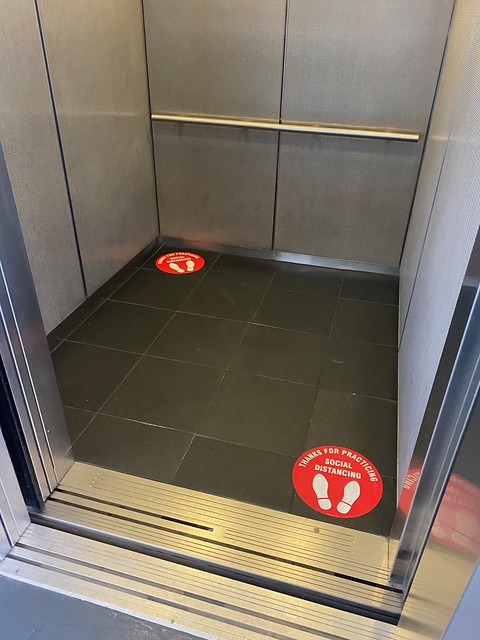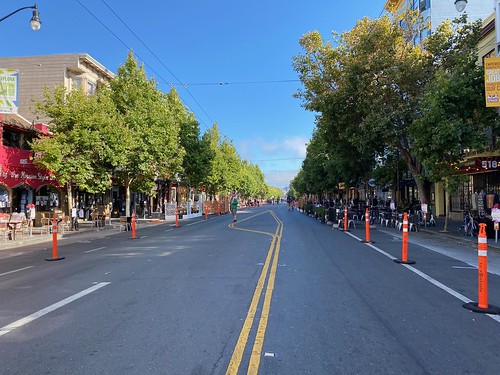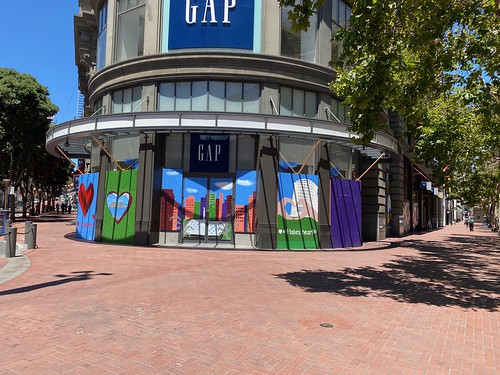It’s been a couple months since my last entry in how this global pandemic has transformed daily life in San Francisco. There’s still no vaccine on the horizon despite Russia’s premature announcement, and likewise the United States has utterly failed to combat the pandemic under Trump’s leadership.
In other words, the important things haven’t changed since last time.
Fortunately there are many far less important things to focus on here in San Francisco: the many ways we continue adapting to the pandemic.
For work I had to take Muni downtown and walk through SOMA to the office a couple times to help wind down the office operations and clear out my stuff. Much of the area around Market Street downtown felt unusually empty — boarded up storefronts, no cable cars, etc.
Today I heard The Gap’s flagship location will be closing for good. For those who remember that was a Woolworth location back in the day, which used to have an entrance directly from the Powell Street subway station.
Oddly the Westfield SF Centre mall across the street was open at the time, but has since closed again. There was a time when I suppose the grocery store in there could have been considered essential (remember Bristol Farms?) but those days are long gone.

Construction on the new Four Seasons tower is much further along than when the pandemic started. The bottom floors will one day house the Mexican Museum, assuming those plans are still on the table.
Across the street the Yerba Buena Gardens had obviously not been cleaned recently, with the pathways absolutely covered in pigeon droppings.

Entering the office was a little surreal — very few others were there, and the elevator had markings indicating it was now only suited for two people at a time. Normally we’d pack it with eight people easily, but not anymore.

Muni is still operating at a very reduced capacity with surface-level buses only and is enforcing a mandatory mask policy. At some stops attendants remind people to wear masks and try to stop buses from getting even slightly crowded.
As seen above signs on the doors indicate that a mask is required. To protect the operators, passengers are only allowed to board through the back doors unless they require special assistance.

Several streets have been converted to outdoor dining areas, including two blocks of Valencia for four days of the week. The sidewalk, parking, and bike lane areas have been converted to outdoor dining with the middle of the street reserved for walking; technically bikes are supposed to be walked but that isn’t really enforced.
Personally I’d love to see this continue on a regular basis — weather permitting of course — though with hundreds of wildfires burning throughout the state right now and smoke billowing through San Francisco this experiment clearly came at the wrong time.
Street art continues to dominate blank, boarded up walls. In July the theme shifted largely to Pride, since there were obviously no “official” Pride celebrations this year.
That said, there was definitely an LGBTQ+ presence at the Black Lives Matter protests in June, with people holding signs with slogans such as “Black Trans Lives Matter.”






